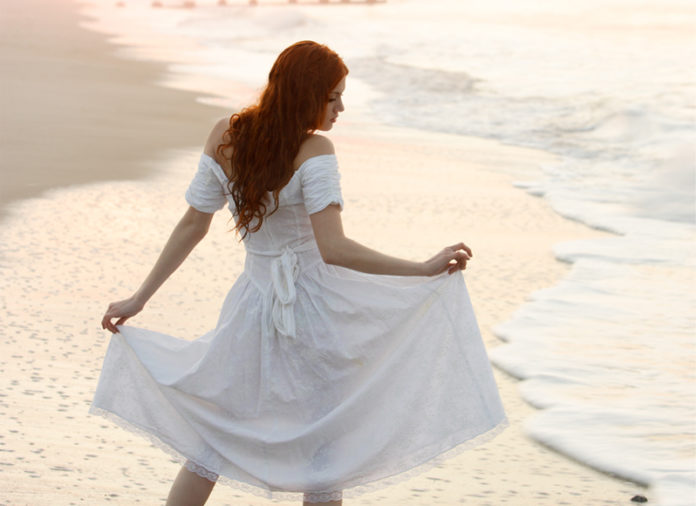by Carl Caylor
Shooting in the “sweet light” in Cape May, New Jersey, required an early wake-up call and a good sized cup of coffee. The night before this demonstration, the dress was chosen from the model’s wardrobe. The simple beauty of it was appealing and it was light and airy with just enough texture to make it interesting. I knew the pastel setting of the beach at sunrise was going to work well with it.
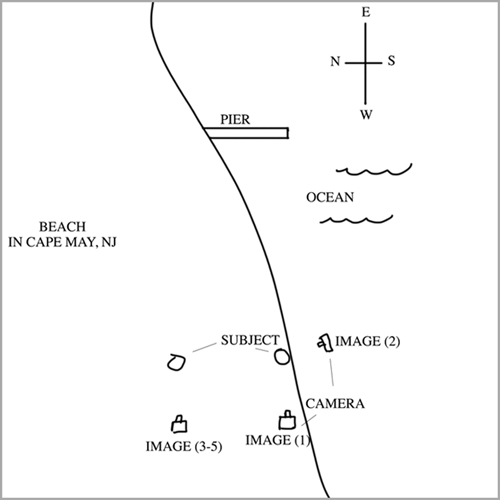 Working in the early morning hours requires a tripod because some of the exposures can get pretty long. The camera was a Canon EOS 1Ds Mark II with a Canon EF70-200mm f2.8L IS USM lens set at 1/8 of a second. Aperture was f5.6 at 400 ISO and the working focal length was 70mm. As long as the model is in a sturdy stance, this setup is doable. The key to this kind of beach portrait is to shoot as soon as you have enough light to see to work. When the sun comes over the horizon, the game is pretty much over. Yes, it is a short window of opportunity, but the window is very magical.
Working in the early morning hours requires a tripod because some of the exposures can get pretty long. The camera was a Canon EOS 1Ds Mark II with a Canon EF70-200mm f2.8L IS USM lens set at 1/8 of a second. Aperture was f5.6 at 400 ISO and the working focal length was 70mm. As long as the model is in a sturdy stance, this setup is doable. The key to this kind of beach portrait is to shoot as soon as you have enough light to see to work. When the sun comes over the horizon, the game is pretty much over. Yes, it is a short window of opportunity, but the window is very magical.
During this short period of time, many things can happen. The background in any direction holds favorable tonal ranges compared to the subject. This being true, the model and the photographer can move in more angles to the light and create different lighting patterns while not worrying about any background problems. As long as the background does what you want for the composition, the subject will be the focal point of the image.
The title image was inspired by Water Color Artist, Steve Hanks. His work is beautiful and inspiring. As I see it, water color painting is about the transparency and the art of working backwards from the white of the paper to the colors involved in the scene. In this image, I saw many layers of transparency. The sand, the wet sand, the shallow wave, the ocean, and then the dress and figure of the girl all came together to create several layers of transparency. But I also looked for depth in the background. By letting the beach fade off in the distance, the viewer gains a sense of space. The distant pier gives us a place to go, but it is perpendicular with the lines of the beach and it stops us, turns us around, and sends us back to the model. It is a simple image, but one with a great deal of thought behind it.
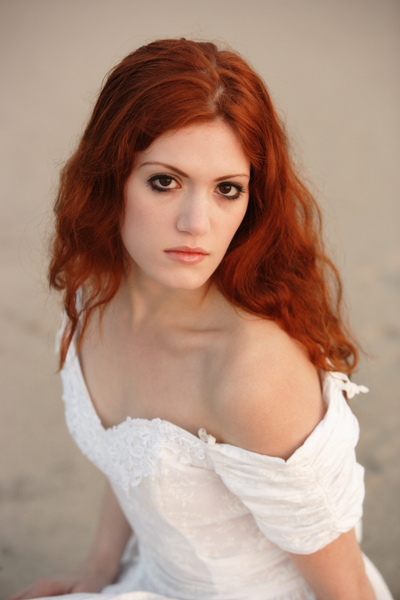 Image #2 was created a bit later in the session. The settings show this: Canon EOS 1Ds Mark II with a Canon EF70-200mm f2.8L IS USM lens set at 1/1000 of a second. Aperture was f4.0 at ISO 400 and the focal length was 95mm. Because of the sweet light, I could move around the subject for a different lighting pattern and still hold the background. In this case, my feet got wet. But it was worth the effort. At that point, there was a light source that allowed me to create a short light. Now it was possible to show communication between the subject and the future image viewer with eye contact. Eye contact, for the most part, should be from a lighted mask of the face or at the very least, a split light. People looking at you from within a shadow (even subjects in a photograph) can be somewhat creepy. If creepy is what you are after, go for it. Otherwise, light is what is looking at you.
Image #2 was created a bit later in the session. The settings show this: Canon EOS 1Ds Mark II with a Canon EF70-200mm f2.8L IS USM lens set at 1/1000 of a second. Aperture was f4.0 at ISO 400 and the focal length was 95mm. Because of the sweet light, I could move around the subject for a different lighting pattern and still hold the background. In this case, my feet got wet. But it was worth the effort. At that point, there was a light source that allowed me to create a short light. Now it was possible to show communication between the subject and the future image viewer with eye contact. Eye contact, for the most part, should be from a lighted mask of the face or at the very least, a split light. People looking at you from within a shadow (even subjects in a photograph) can be somewhat creepy. If creepy is what you are after, go for it. Otherwise, light is what is looking at you.
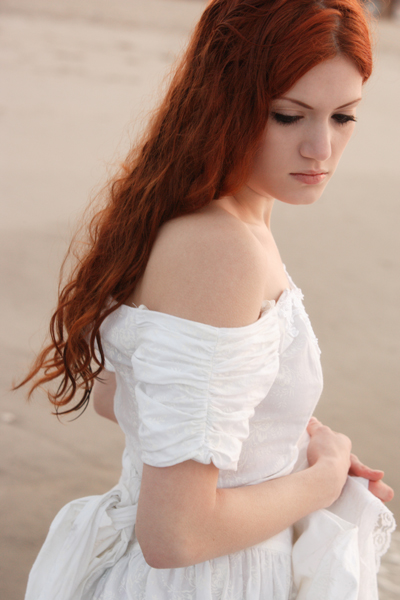 Image #3 was created a bit earlier, however. Again, the camera was a Canon EOS 1Ds Mark II with a Canon EF70-200mm f2.8L IS USM lens set at 1/10 of a second. Aperture was f7.1 at 400 ISO and the focal length was 80mm. She and I moved away from the water while maintaining the same relationship with the light. This provided the same lighting pattern as before but with a different background. By turning the subject, a single accent sculpted her face and I let her look down with a somber expression to match the emotion of the light.
Image #3 was created a bit earlier, however. Again, the camera was a Canon EOS 1Ds Mark II with a Canon EF70-200mm f2.8L IS USM lens set at 1/10 of a second. Aperture was f7.1 at 400 ISO and the focal length was 80mm. She and I moved away from the water while maintaining the same relationship with the light. This provided the same lighting pattern as before but with a different background. By turning the subject, a single accent sculpted her face and I let her look down with a somber expression to match the emotion of the light.
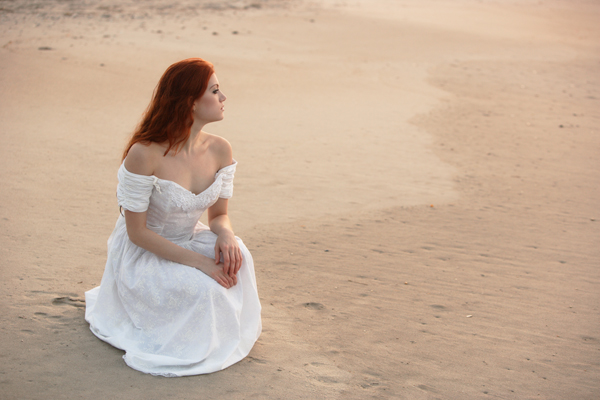 Images #4 and #5 have the same settings, 1/80 of a second at f4.0, but they look different. Image #4 is a full-length scenic image and was created at a focal length of 70mm. Image #5 was recorded at a focal length of 140mm. Notice how the background blends in image #5.
Images #4 and #5 have the same settings, 1/80 of a second at f4.0, but they look different. Image #4 is a full-length scenic image and was created at a focal length of 70mm. Image #5 was recorded at a focal length of 140mm. Notice how the background blends in image #5.
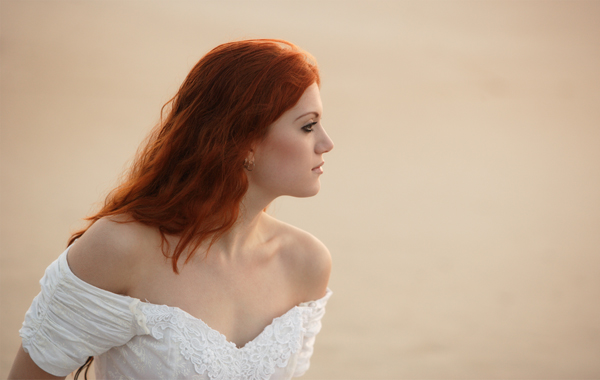
There are so many variations that can be produced in a scene just by knowing the capabilities of our equipment. Both of these images are profile poses with good profile light. You can pose a subject in a profile stance at any given time, but it will always be more powerful if the light is coming from behind the subject.
Sweet light times are magical and much easier to work in. This is why my family portrait sessions are all done in the evening. The light is better for both subjects and backgrounds. Plus, it is when folks are home from work. Don’t battle. Work smarter, not harder.
 Carl Caylor is one of the most sought after instructors in the country because of his “Hands-On” coaching approach. His greatest strength is his ability to see what skills others already posses and then break things down in simple terms to help enhance those skills to a new level. In his Texas School class on “Natural Light Portraiture,” Carl will demonstrate how to find usable light in a natural environment. To learn more, go to TexasSchool.org.
Carl Caylor is one of the most sought after instructors in the country because of his “Hands-On” coaching approach. His greatest strength is his ability to see what skills others already posses and then break things down in simple terms to help enhance those skills to a new level. In his Texas School class on “Natural Light Portraiture,” Carl will demonstrate how to find usable light in a natural environment. To learn more, go to TexasSchool.org.



